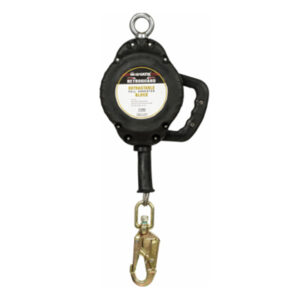Audio Visual system integration has become increasingly complex. Modern AV setups often include a combination of projectors, displays, audio processors, control systems, and networking equipment. A detailed schematic diagram is crucial for several reasons:
-
Clarity for Installation: Installers need a clear roadmap to wire and set up the system efficiently.
-
Troubleshooting: Accurate diagrams help technicians identify and resolve issues quickly.
-
Client Communication: A visual representation of the system allows clients to understand how devices interact.
-
Compliance and Documentation: Detailed schematics ensure adherence to industry standards and provide essential documentation for maintenance and upgrades.
For AV integrators, creating these diagrams manually or using generic drawing tools is time-consuming and error-prone. This is where specialized AV Schematic Diagram software comes into play.
Why Professional AV Integrators Use Specialized Software
-
Component Libraries
Professional AV schematic software comes with preloaded libraries of AV equipment such as projectors, displays, mixers, speakers, cameras, and control devices. This eliminates the need to manually draw symbols and ensures accuracy. -
Signal Flow Automation
Advanced software can automatically show signal paths between devices, making complex routing clear and manageable. -
Real-Time Updates
If a component is moved or replaced, the software updates the schematic automatically, ensuring that the diagram always reflects the current system. -
Integration with Other Tools
Many tools integrate with CAD software, BIM models, or project management systems, allowing AV integrators to work seamlessly with architects and engineers. repurtech -
Error Prevention
Software can detect conflicts, incorrect connections, or missing components, reducing the likelihood of mistakes during installation.
Top Software Used by Professional AV Integrators
XTEN-AV
-
Platform: Cloud-based, professional AV schematic solution
-
Features:
-
Drag-and-drop placement of AV equipment
-
Preloaded symbols for all major AV devices
-
Automatic signal flow lines and connectivity checks
-
Integration with project management and client documentation
-
Real-time collaboration for team-based projects
-
-
Why It Stands Out: XTEN-AV is specifically designed for AV integrators. Its ability to generate detailed AV Schematic Diagram quickly, coupled with real-time updates and collaboration, makes it ideal for both small and large AV projects.
Visio (Microsoft)
-
Platform: Desktop and cloud-based diagramming tool
-
Features:
-
Extensive diagram templates including AV schematics
-
Drag-and-drop device placement
-
Integration with Microsoft Office and cloud services
-
Customizable stencils for AV equipment
-
-
Why It Stands Out: While not AV-specific, Visio is widely used due to its flexibility and integration with other Microsoft tools. Professional AV integrators often combine Visio with custom libraries to design AV systems efficiently.
AutoCAD with AV Add-ons
-
Platform: Desktop CAD software with industry-specific add-ons
-
Features:
-
Precise drawing capabilities for complex systems
-
Custom AV equipment blocks and symbols
-
2D and 3D schematic creation
-
Integration with building plans for accurate spatial planning
-
-
Why It Stands Out: AutoCAD is preferred for large projects where integration with architectural plans is necessary. Its precision and ability to handle complex schematics make it a staple for professional AV integrators.
SketchUp with AV Plugins
-
Platform: 3D modeling software with AV-focused extensions
-
Features:
-
3D visualization of AV systems
-
Realistic placement of projectors, screens, and speakers
-
Integration with AV routing diagrams
-
Exportable schematics for installation teams
-
-
Why It Stands Out: SketchUp is used for projects where spatial layout is critical, such as large auditoriums or theaters. The combination of 3D visualization and AV schematic creation helps integrators plan both layout and signal flow effectively.
D-Tools System Integrator
-
Platform: Dedicated AV project management and design software
-
Features:
-
AV equipment libraries with manufacturer data
-
Automatic generation of AV Schematic Diagram from equipment lists
-
Integration with quotes, proposals, and documentation
-
Reporting tools for installers and clients
-
-
Why It Stands Out: D-Tools is favored for end-to-end project management, from system design to billing. Its schematic capabilities are robust and tie directly into procurement and installation workflows.
Choosing the Right Software for AV Schematic Design
When selecting software for AV schematic diagrams, consider:
-
Project Scale
-
Small installations: XTEN-AV or Visio may suffice
-
Large or complex projects: AutoCAD with AV add-ons or D-Tools
-
-
Collaboration Needs
-
If teams are distributed or remote, cloud-based tools like XTEN-AV are ideal
-
-
Integration with Architectural Plans
-
For projects requiring spatial accuracy, AutoCAD or SketchUp with AV plugins ensures proper placement and sightline calculations
-
-
Ease of Use vs Advanced Features
-
XTEN-AV offers a balance of ease and functionality, while AutoCAD and D-Tools provide advanced features at a steeper learning curve
-
Best Practices for Creating AV Schematic Diagrams
-
Start with a Floor Plan
Import architectural plans or drawings to accurately place devices. -
Use Standard Symbols
Maintain clarity and ensure diagrams are understandable for installers and clients. -
Show Signal Flow Clearly
Differentiate between audio, video, and control lines using distinct colors or line styles. -
Include Key Specifications
Annotate devices with model numbers, power requirements, and connection types. -
Regularly Review and Update
Ensure that any changes during installation are reflected in the schematic for accurate documentation.
Conclusion
Professional AV integrators rely on specialized software to create detailed and accurate AV Schematic Diagram for installation, planning, and client communication. Tools like XTEN-AV, Visio, AutoCAD, SketchUp, and D-Tools provide the necessary features for drag-and-drop design, signal flow management, spatial visualization, and real-time collaboration.
Among these, XTEN-AV stands out as a purpose-built platform that combines ease of use with professional-level features, enabling integrators to design detailed schematics efficiently while maintaining accuracy and clarity. By leveraging the right software, AV integrators can ensure that every system they design is well-documented, easy to install, and fully aligned with client expectations.


